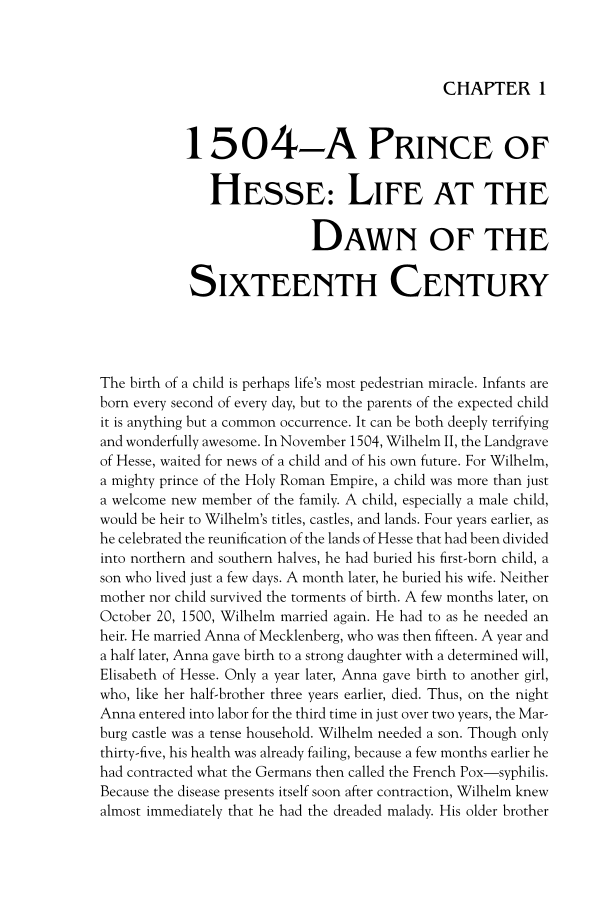CHAPTER 1 1504 — A PRINCE OF HESSE: LIFE AT THE DAWN OF THE SIXTEENTH CENTURY The birth of a child is perhaps life’s most pedestrian miracle. Infants are born every second of every day, but to the parents of the expected child it is anything but a common occurrence. It can be both deeply terrifying and wonderfully awesome. In November 1504, Wilhelm II, the Landgrave of Hesse, waited for news of a child and of his own future. For Wilhelm, a mighty prince of the Holy Roman Empire, a child was more than just a welcome new member of the family. A child, especially a male child, would be heir to Wilhelm’s titles, castles, and lands. Four years earlier, as he celebrated the reunifi cation of the lands of Hesse that had been divided into northern and southern halves, he had buried his fi rst-born child, a son who lived just a few days. A month later, he buried his wife. Neither mother nor child survived the torments of birth. A few months later, on October 20, 1500, Wilhelm married again. He had to as he needed an heir. He married Anna of Mecklenberg, who was then fi fteen. A year and a half later, Anna gave birth to a strong daughter with a determined will, Elisabeth of Hesse. Only a year later, Anna gave birth to another girl, who, like her half-brother three years earlier, died. Thus, on the night Anna entered into labor for the third time in just over two years, the Mar- burg castle was a tense household. Wilhelm needed a son. Though only thirty-fi ve, his health was already failing, because a few months earlier he had contracted what the Germans then called the French Pox—syphilis. Because the disease presents itself soon after contraction, Wilhelm knew almost immediately that he had the dreaded malady. His older brother
Document Details My Account Print multiple pages
Print
You have printed 0 times in the last 24 hours.
Your print count will reset on at .
You may print 0 more time(s) before then.
You may print a maximum of 0 pages at a time.
























































































































































































